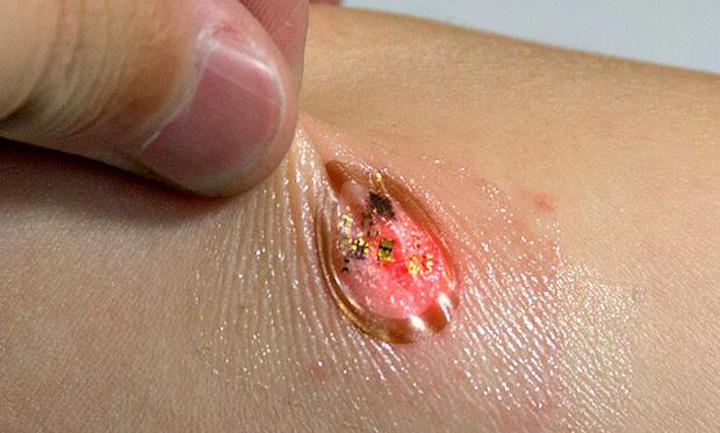Powering wearables for efficient, long term, continuous, use remains a challenge.
Illinois professor John Rogers has, again, disrupted himself. His new, stretchable, ultra-thin, health monitoring patches are wirelessly powered via smartphone near field communication. This enables the devices to be 5-10 times thinner than before — increasing comfort and therefore the willingness of people to wear them.
LEDs illuminate the skin. Some light is absorbed, and reflected light is picked up by light sensors. Data is transmitted to an external device. Ultraviolet ray exposure can be measured (see the MC10/L’Oreal UV monitor) as well as skin temperature.
In a recent study, the NFC powered patch was used to monitor heart rate, blood oxygen level, skin temperature, ultraviolet radiation exposure, and changes in skin color.
Click to view ApplySci’s coverage of John Rogers’ work, which can also be seen in the presentations of many of our conference speakers.
Digital Health + NeuroTech Silicon Valley – February 7-8, 2017@ Stanford University
